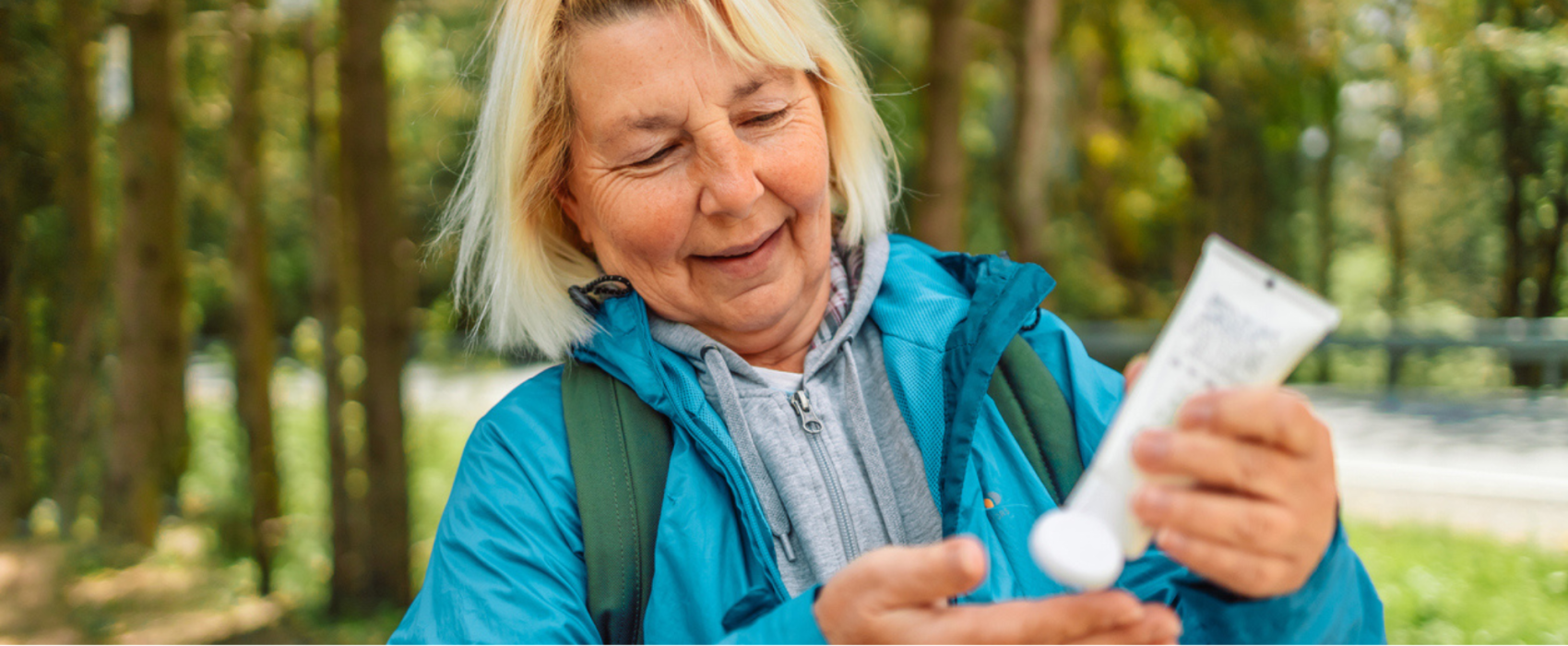Whilst it is important to take care in the sun, a little bit of sunshine is actually good for you.
The aim is to strike a balance between protecting yourself from the sun and getting enough Vitamin D from sunlight. Vitamin D is made in our bodies through the action of the sun's UVB rays on our skin. Vitamin D is essential for absorbing calcium, which keeps our bones healthy and protects against serious chronic diseases later in life.
The sun also reduces the level of the hormone melatonin, which regulates sleep. Having lower levels of this hormone in your body gives you more get up and go, whilst boosting your immune system by encouraging the production of white blood cells.
Why do we need protection?
Everyone needs sunscreen to protect their skin from damaging UV rays from the sun, and sunburn. Using sunscreen products decreases the chances for sunburn and can prevent skin cancer.
The two types of UV rays that penetrate the earth’s atmosphere are UVA and UVB. UV rays are stronger during the spring and summer months. The UV Sun Index is a good indication of the strength of the UV radiation on a particular day. During the warmer UK months, irrespective of any cloud cover, the UV rating frequently exceeds these levels, exposing outdoor workers to the threat.
When the UV rating hits level 3 – or ‘Moderate’ – the amount of solar UV radiation reaching the earth’s surface is strong enough to damage the skin.
SPF (Sun Protection Factor)
SPF is the measure of a sunscreen’s ability to prevent UVB from damaging the skin. Sunscreen with an SPF 30 protects against UVB rays 30 times longer than unprotected skin before starting to turn red. The SPF also determines how much UVB is blocked when worn. Sunscreen with SPF 15 blocks 93% of the UVB rays, while SPF 30 blocks 97%.
The star rating measures the amount of UVA protection. The higher the star rating, the better.
How to apply sunscreen
Most people don’t apply enough sunscreen. As a guide, adults should aim to apply around 2 teaspoons of sunscreen if you’re just covering your head, arms and neck, or 2 tablespoons if you’re covering your entire body while wearing a swimming costume.
Sunscreen should be applied to all exposed skin, including the face, neck, ears and head if you have thinning or no hair – but a wide-brimmed hat is better. This includes applying it straight after you’ve been in water – even if it’s ‘water resistant’ – and after towel drying, sweating or when it may have rubbed off.
Protect yourself
- Use minimum SPF 30
- Use Broad Spectrum Protection (UVA & UVB protection) such as SPF 30 4-star rating
- Apply to all exposed areas
- If you plan to be out in the sun long enough to risk burning, sunscreen needs to be applied twice:
- 30 minutes before going out;
- just before going out.
- Re-apply as frequently as possible
- Do not rely on products that offer 8+ hours protection (sweating will remove effectiveness)
- Make sure the sunscreen has not passed its expiry date
- Stay out of the sun between 11am-3pm if possible
- Cover up with suitable clothing (close-weave fabrics)
- Wear sunglasses – with wraparound lenses or wide arms with the CE mark
- Stay hydrated

